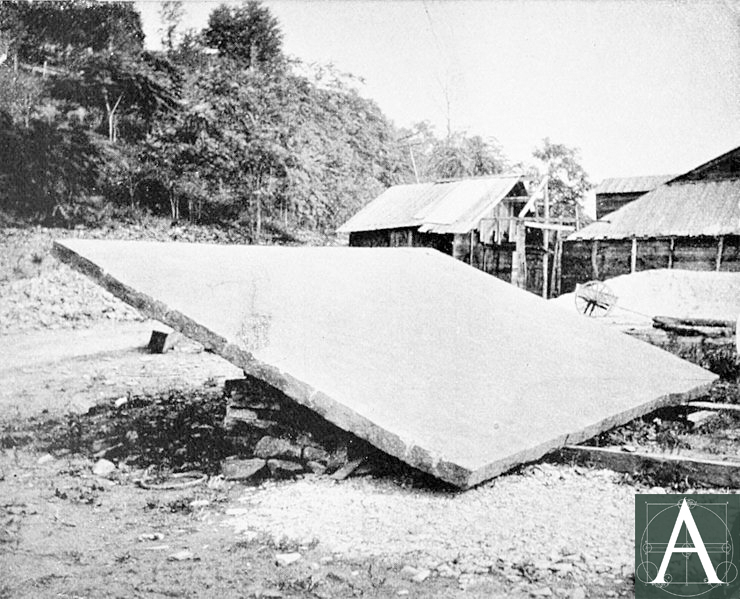Thanks to Richard Pieper for very interesting article The Granite Streets and Sidewalks of Lower Manhattan that was recently published in APT Bulletin: The Journal of the Association for Preservation Technology. [Vol. 50, No. 2/3 (2019), pp. 5-16]. Mr. Pieper provides a close look at granite sidewalk construction and the large role New England quarries played in providing this material, especially Maine, as well as offering a terrific bibliography. As an unexpected bonus, Mr. Pieper solved a riddle that eluded me, namely “Where does North River Flagstone come from?” This stone is frequently mentioned in specifications in New England. Given that New Englanders have always loved to re-use names, and the region is filled with North Rivers, South Rivers, Long Ponds, and other descriptive place names, finding the North River from which this stone came proved a frustrating task. The answer? North River was an old name for the Hudson River. The name was resuscitated to describe the bluestone that began to be quarried from Ulster County in the first quarter of the nineteenth century. Centered around Kingston, New York, the production of this paving stone became a huge industry employing as many as 20,000 men in the nineteenth century until it was finally brought to an end in the early twentieth century by the double punch of having quarried out the most easily reached stone, and the widespread introduction of Portland cement that poured concrete sidewalks cheaper and easier. Before the business collapsed, it produced some monumental paving stones including one quarried in 1890 that was believed to be largest single block ever produced – 20 feet x 24 feet by 9 inches thick.

Popular Science Monthly Volume 45, Public Domain, https://commons.wikimedia.org/w/index.php?curid=13466248
If any of you can provide a similarly productive lead as to the origin of “Cooper’s Flagstones” from Maine, I will be able to die happy. These stones appear in specifications and advertisements, but with no indication of their origin except Maine.
